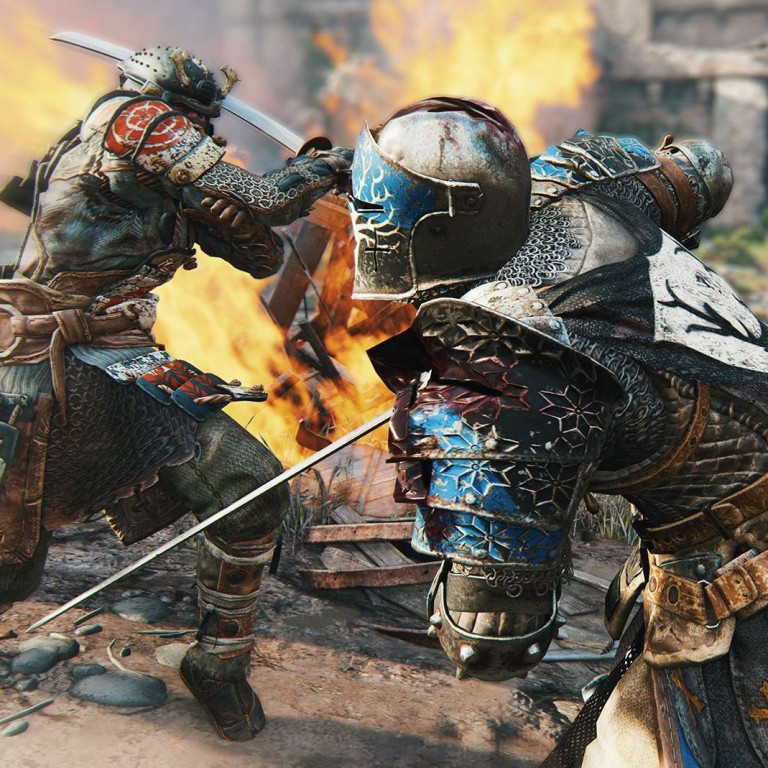
Game review: For Honor – a fun fighting system and breathtaking scenery make it a winner
Learn the fighting moves and the set-pieces, choose your character’s allegiance and immerse yourself in a world of sieges, death matches and battles
Ubisoft
In a recent radio interview, an ex-boxer spoke about the peculiar nature of her sport. One thing she said really stood out: “Boxing teaches you to use violence as a resource”. That phrase describes the experience of playing For Honor pretty well. This is a game about learning to use deadly force in order to navigate a world where nothing else matters but conflict. For Honor has the purity, depth and bloody grace of a martial art.
The set-up is certainly as simple as a sport. The player selects from three warring factions – the knights, the samurai and the Vikings – and then fights everyone else, either in the single-player mode or online. The former is effectively a training exercise, teaching you the basics of combat, as well as the special-move sets specific to all the available classes of warrior, unlockable during play.
There is a kind of story, about factions battling to control land and food, but really, you’re just stomping through a series of beautifully realised historical environments bludgeoning people, while looking for collectibles (this is a Ubisoft game after all). It’s basic stuff, but it does feature a range of breathtaking set-piece encounters from castle sieges to village raids, all drawn in gritty, pulverising detail.
The fighting system is a lot of fun to learn, mixing the combo-building of a 2D fighting game such as Street Fighter, with the more tactical melee combat of sims like Mount and Blade and Blade Symphony. Onscreen prompts show you where an opponent is going to strike, so it’s about reading those indicators quickly enough, before setting your own attacks in motion.
Much of the skill is in learning the rhythm of every movement, timing the button presses perfectly so moves string together into a cavalcade of sword-whirling, limb-hacking manoeuvres. You also need to learn the guard break move to push an enemy (off a bridge if you’re lucky), and the various special “feats”, a range of power-ups including health bonuses, grenades and bows.

The multiplayer element of For Honor takes place amid a global Faction War, where each match in every mode contributes toward an ever-changing territorial battle between the three warrior clans. Territorial control shifts daily, with major weekly updates; at the end of a season, the winner is announced and players whose characters represent the victorious faction win customisation items and other goodies. It’s an interesting way to add significance to the online battles, especially as it’s multiplatform, encompassing all PC, PS4 and Xbox One matches.
As for the modes themselves, there’s Dominion, a Conquest-style four vs four face-off to control objective points, a standard deathmatch and the duel and brawl modes which pitch you into one-on-one or two-on-two cage fights. They’re challenging, highly physical and rewarding, forcing you into much longer, more tactical engagements with other players that we’re used to from first-person shooters. In this game, you need to face each other, probe for tactical weaknesses, think about positioning, timing, the environment and whether you can realistically come out alive. The combat is densely physical, brutish and crunching, the detailed character models sparring with incredible muscular grace. Every encounter feels epic and deadly.
For Honor exhibits an extraordinary purity of vision – the result perhaps of designer Jason VandenBerghe’s 10-year quest to get it made. It is therefore a fascinating game for people who take the fighting genre seriously. It isn’t a brawler, it isn’t Street Fighter and it isn’t Mount and Blade – it exists somewhere between the three, and it demands that players develop a broad range of skills to master its armoury.
You will enjoy For Honor more if you can form a clan with friends and support each other properly, but even for casual swordsmen and swordswomen it has much to offer. Yes, the real-money system is galling, but it’s a reality of the modern industry that we’re probably going to have to live with, and everything that you can buy with cash can eventually be earned through doing what the game wants you to do; learning to control and administer the resource of violence against ever more testing enemies.

